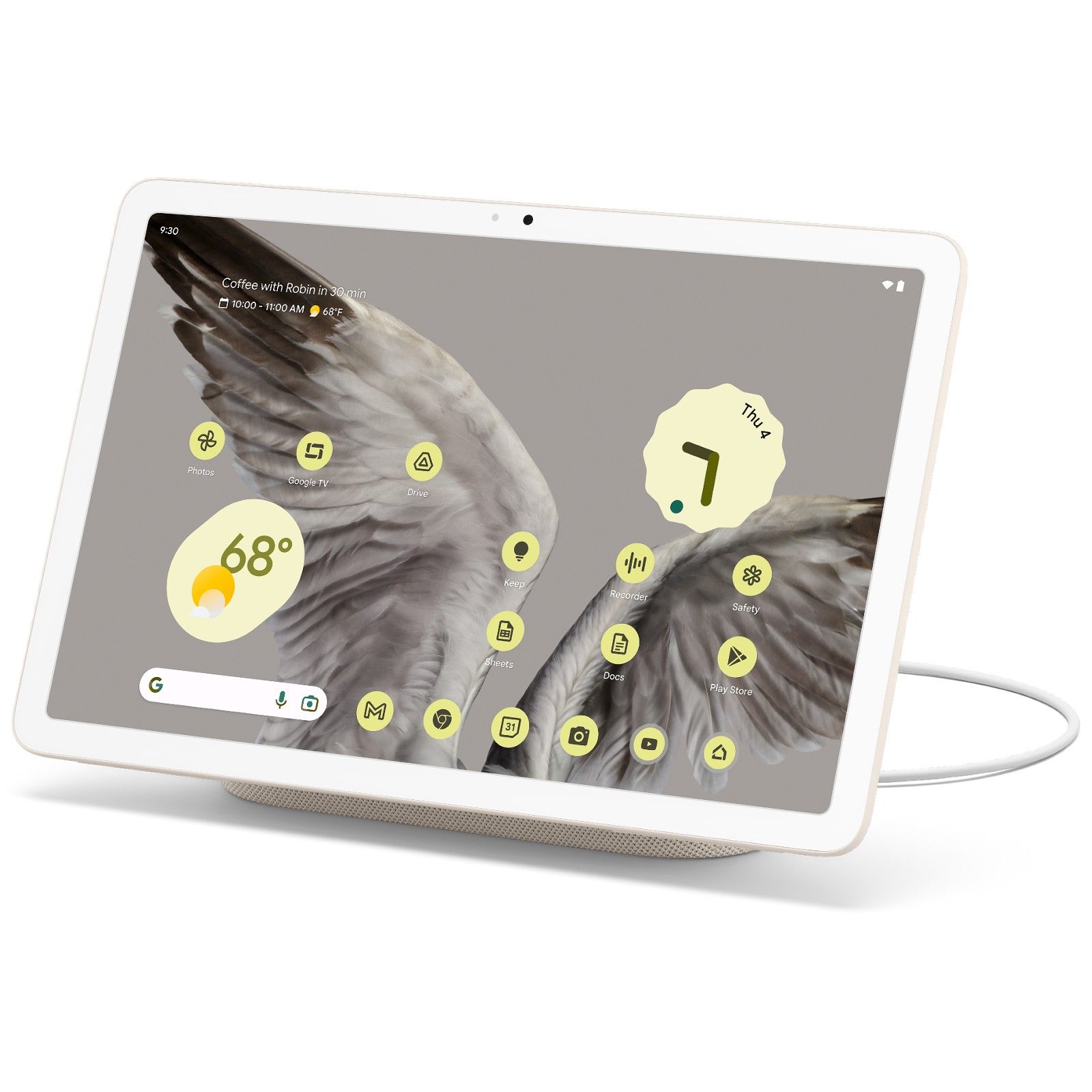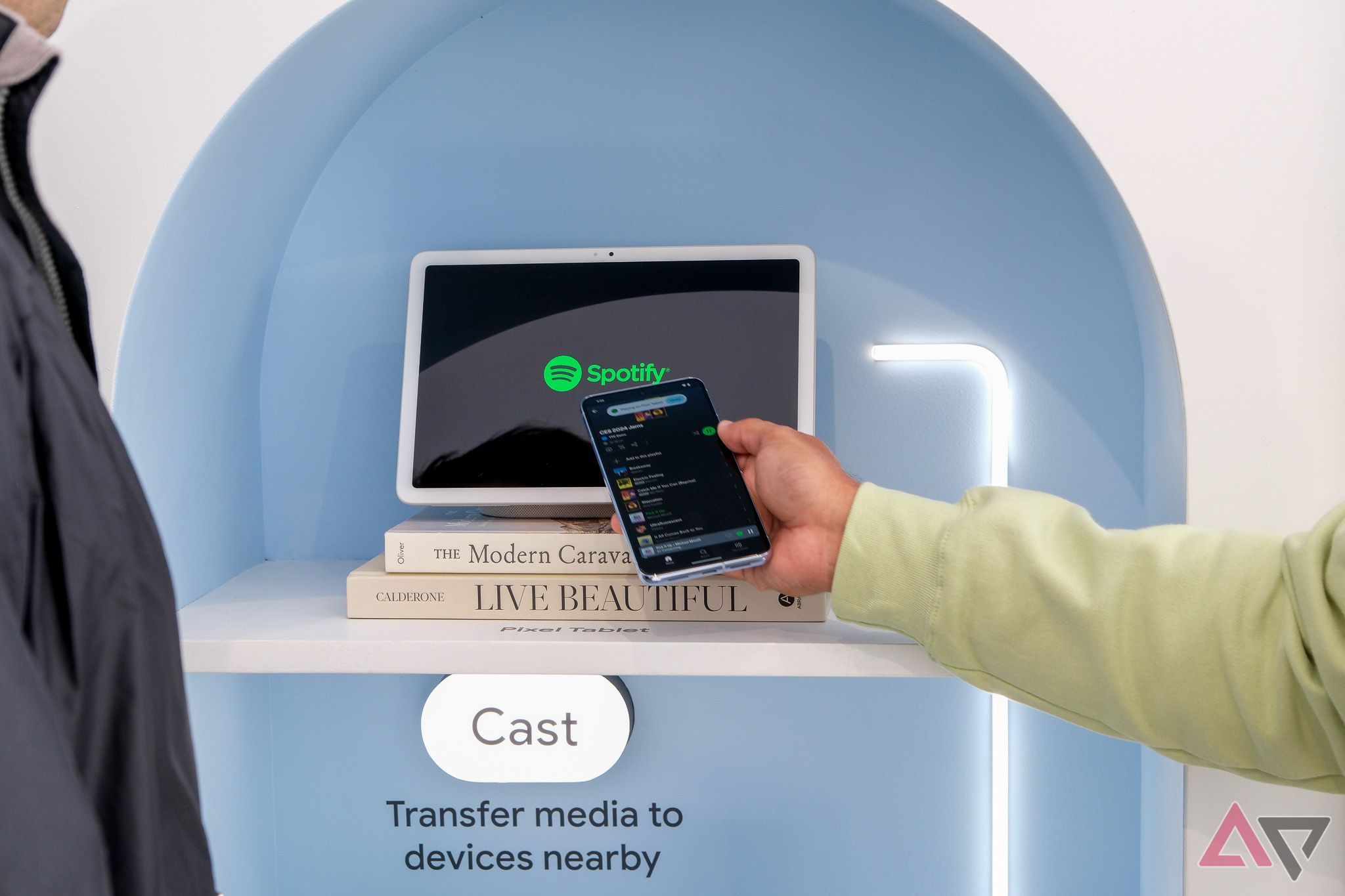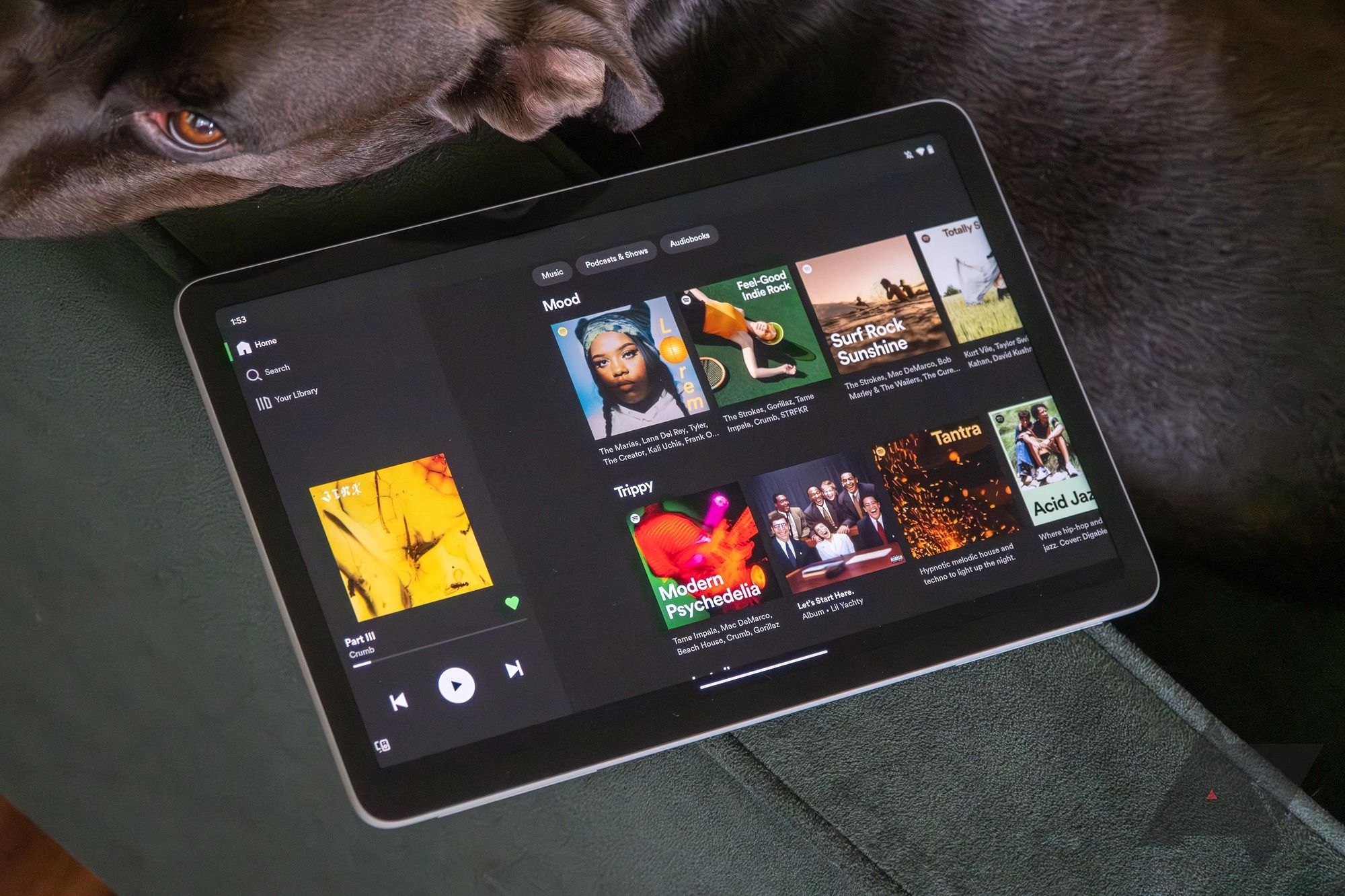At CES last week, Google took the wraps off a feature we’ve been expecting since last summer. This year, the Pixel family is picking up a feature that’ll let you cast music streams from Spotify or YouTube Music from certain Pixel phones to the Pixel Tablet just by holding your phone near the docked tablet. I got the chance to try it in person, and honestly, it works better than I expected — but the Pixel Tablet is pretty low on my list of devices I’d want this functionality on.
Google hasn’t said a whole lot about this new feature publicly, but we know the broad strokes. Sometime this year, you’ll be able to transfer your music stream from many newer Pixel phones — the Pixel 6 Pro, Pixel 7 and 7 Pro, Pixel Fold, and Pixel 8 and 8 Pro — to a docked Pixel Tablet by bringing the phone within a few inches of the tablet. When you get the two near each other, the phone vibrates and briefly shows a dialog to give you the opportunity to cancel the transfer. If you don’t interact with the dialog, your music starts playing on the Pixel Tablet.
As far as I can tell, the at-home user experience should be as simple as that. It’s a really cool bit of ecosystem integration that makes using multiple Pixel products a meaningfully better experience — and if it brings Apple to mind, that’s because you can do the same thing with an iPhone and a HomePod. The idea is that you’ll be able to keep listening to the music or podcast you had on while out and about as you return home by seamlessly handing it off to your Pixel Tablet.
But as cool as it is, the new feature has some annoying limitations. For one, at launch, it’ll only support audio streams from YouTube Music and Spotify — no other audio services, and no video services. But more frustratingly, this integration is only confirmed for the Pixel Tablet. You won’t be able to transfer audio streams to Google’s smart displays or speakers in this way, at least not at first. I think the Pixel Tablet’s Charging Speaker Dock is great for keeping the tablet charged and enabling always-on smart display functionality, but I can’t say I’ve been very impressed with the audio it pumps out. I’m much more likely to fire up Spotify on a Nest Audio speaker or Nest Hub Max display — or any number of other cast-enabled gadgets not made by Google.
This narrow compatibility seems to come down to hardware capabilities: the Pixel Tablet and all the Pixel phones this feature is coming to have ultra-wideband (UWB) radios built in. UWB allows for very precise short-range location tracking, and enables two UWB-equipped devices to know where each other are in physical space. That functionality seems to be what this new media casting feature is built around, and it’s not built into older Nest smart displays.
Bluetooth and Wi-Fi have some utility when it comes to location and positioning, but UWB is purpose-built for it, and I’m not sure whether it’s possible to enable a similar proximity-based media hand-off feature without UWB. If it is, I have to hope Google is hard at work getting it up and running on its older, better speakers. Otherwise, the Nest Audio is coming up on its fourth birthday later this year — and UWB compatibility for zero-effort music casting would be a great get for a new generation.

Google Pixel Tablet
Starting this year, you’ll be able to transfer your music stream from your Pixel phone to a docked Pixel Tablet just by bringing the two near each other. If only the tablet’s Charging Speaker Dock were a better speaker.
Source link


